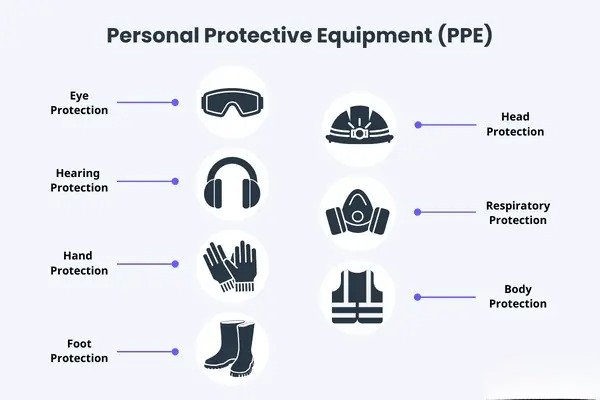Recent advancements in Personal Protective Equipment (PPE) for military personnel are focused on improving protection, mobility, and situational awareness while addressing the challenges posed by modern threats. These developments leverage cutting-edge materials, advanced technology, and ergonomic designs to enhance soldier survivability and combat effectiveness.
1. Lightweight and Advanced Armor Materials
- High-Strength Composite Materials:
- Use of ultra-high molecular weight polyethylene (UHMWPE), aramid fibers (e.g., Kevlar), and carbon nanomaterials reduces weight while maintaining protection levels.
- Example: Dyneema fibers provide high ballistic resistance with reduced bulk.
- Ceramic Armor Plates:
- Lighter and more effective at stopping high-velocity projectiles than traditional steel plates.
- Example: Silicon carbide (SiC) and boron carbide (B4C) ceramics.
- Graphene Integration:
- Promising material for enhancing strength and flexibility in body armor while keeping it lightweight.
2. Modular and Scalable Protection
- Customizable Systems:
- Modular designs allow soldiers to tailor their PPE to mission requirements, adding or removing protective components as needed.
- Example: Soldiers can attach neck, groin, and side armor to standard vests for increased coverage.
- Scalable Protection Levels:
- PPE systems designed for quick upgrades to higher protection levels (e.g., from soft armor to hard plate inserts).
3. Enhanced Ballistic Protection
- Multi-Hit Capability:
- Armor designed to withstand multiple impacts without compromising protection.
- Blast Mitigation:
- Integrated blast-resistant materials reduce the effects of IEDs and explosives on personnel.
4. Improved Mobility and Ergonomics
- Weight Distribution Systems:
- Exoskeletons and load-bearing frames distribute the weight of armor and equipment more evenly, reducing fatigue.
- Example: ONYX Exoskeleton developed by Lockheed Martin.
- Ergonomic Designs:
- PPE designed with enhanced flexibility for full range of motion during combat.
5. Advanced Helmets
- Enhanced Ballistic Helmets:
- Lightweight helmets capable of stopping small arms fire and shrapnel.
- Example: ACH Gen II (Advanced Combat Helmet) with improved ballistic protection.
- Integrated Head-Up Displays (HUDs):
- Provides real-time battlefield information, including maps, targeting data, and friendly unit positions.
- Example: ENVG-B (Enhanced Night Vision Goggle-Binoculars) integrates HUD with night vision.
- Hearing Protection and Communication:
- Active noise cancellation protects against loud blasts while enabling clear communication.
- Example: 3M PELTOR ComTac headsets.
6. Advanced Fabrics for Uniforms
- Fire-Resistant Materials:
- Uniforms made from flame-resistant fibers like Nomex and Kermel protect against fire and heat.
- Multi-Threat Protection:
- Fabrics offering protection against chemical, biological, and radiological threats.
- Moisture-Wicking and Cooling:
- Improved comfort and performance in hot climates through advanced moisture management technologies.
- Integrated Camouflage:
- Multi-spectral camouflage fabrics reduce visibility across the electromagnetic spectrum, including infrared.
7. Chemical, Biological, Radiological, and Nuclear (CBRN) Defense
- Next-Generation CBRN Suits:
- Lighter and more breathable suits with advanced materials for extended wear without sacrificing protection.
- Example: Integrated Protective Ensemble (IPE) systems for CBRN environments.
- Self-Decontaminating Fabrics:
- Suits with embedded nanomaterials or coatings that neutralize chemical agents on contact.
8. Blast-Resistant Footwear
- Shock-Absorbing Soles:
- Protect against landmine and IED blasts while maintaining mobility.
- Reinforced Materials:
- Footwear designed to withstand punctures and debris impact.
9. Smart PPE and Wearable Technology
- Integrated Sensors:
- PPE equipped with sensors to monitor vital signs, detect injuries, or identify environmental threats.
- Example: Wearables that detect toxic gases or radiation exposure.
- Health Monitoring Systems:
- Track heart rate, hydration levels, and fatigue to alert commanders of soldiers’ physical conditions.
- Augmented Reality (AR):
- Integrated AR systems in helmets and goggles enhance situational awareness.
- Example: Microsoft HoloLens adapted for military applications.
10. Exoskeletons for Enhanced Performance
- Load-Bearing Exoskeletons:
- Reduce physical strain and enhance mobility by assisting with carrying heavy equipment.
- Example: Sarcos Guardian XO, a powered exoskeleton.
- Strength Augmentation:
- Allow soldiers to perform physically demanding tasks, such as scaling walls or lifting heavy objects.
11. Anti-Digital Threats
- Electromagnetic Shielding:
- Materials integrated into uniforms and helmets to protect against electromagnetic pulse (EMP) attacks.
- Anti-Surveillance:
- Smart fabrics that prevent detection by drones and thermal imaging systems.
12. Tailored PPE for Women in Combat
- Ergonomic Designs:
- PPE specifically designed to fit female body shapes, ensuring comfort and effectiveness.
- Equal Protection Standards:
- Maintaining the same ballistic and environmental protection as standard PPE.
13. Cost-Effective Manufacturing and Sustainability
- 3D Printing:
- Enables rapid production and customization of PPE components.
- Recyclable Materials:
- Use of environmentally friendly materials for long-term sustainability.
14. Current and Emerging Examples
- ENVG-B (Enhanced Night Vision Goggle-Binoculars):
- Combines night vision with augmented reality for improved targeting and situational awareness.
- TALOS (Tactical Assault Light Operator Suit):
- A futuristic exoskeleton with full-body armor and integrated systems for Navy SEALs.
- IronVision Helmet:
- Provides tank crews with a 360-degree external view through augmented reality.
Strategic Impact
- Improved Soldier Survivability:
- Enhanced protection against ballistic, blast, and environmental threats.
- Increased Operational Efficiency:
- Lightweight and ergonomic designs reduce fatigue and improve mobility.
- Situational Awareness:
- Integrated smart technologies provide soldiers with real-time data and alerts.
- Adaptability:
- Modular and scalable designs ensure PPE can be tailored to specific missions and threats.
Conclusion
The latest developments in PPE for military personnel reflect the growing demand for advanced protection, comfort, and integrated technology. From lightweight ballistic armor and smart helmets to exoskeletons and self-decontaminating fabrics, modern PPE is designed to enhance soldier safety and performance in increasingly complex and multi-dimensional combat environments. As threats evolve, continuous innovation in PPE will remain critical to ensuring the effectiveness and survivability of military personnel.
Hashtags
#MilitaryPPE #AdvancedPPE #CombatGearInnovation #SoldierProtection #DefenseEquipment #BodyArmorTech #BallisticProtection #AdvancedBodyArmor #LightweightArmor #ImpactResistantGear #CBRNPPE #ChemicalProtectionGear #BiologicalDefenseEquipment #RadiationShielding #SmartPPE #NextGenPPE













